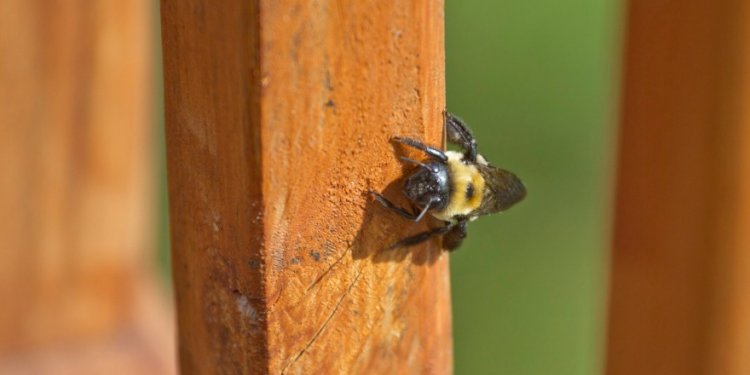
How to Keep Carpenter bees Away?
Carpenter bees are huge black colored individual bees that look similar to bumble bees but have bare, shiny backs whereas a bumble-bee's back is hairy. Unlike honey bees that replicate in hives, carpenter bees drill into wood to be able to set their eggs. Their particular holes tend to be completely circular and about 1/4 inch in diameter.
Although carpenter bees favor softwoods such cedar, redwood, or cypress, they happily attack pine and a lot of various other types of timber. Even force treated lumber just isn't resistant from carpenter bee assault. As the bee drills into the timber, coarse sawdust are seen taken from the opening and turning up below. Because it only takes a couple of hours for a carpenter bee to drill a hole various ins deep, lots of holes can appear over a fairly short time of time.
Most carpenter bee task occurs during the early spring when male and female bees emerge after investing winter months in old nest tunnels. After they have actually paired and mated, the female bee drills into an appropriate website whilst the male remains nearby to prevent intruders. Male carpenter bees frequently frighten people with their hostile behavior but because they have no stinger they have been really harmless. Females have actually a stinger but only use it if molested. Once the initial hole is drilled through area, the bee could make a turn and excavate a tunnel over the whole grain of this lumber. This tunnel, which might operate for all inches, becomes the cavity in which the female deposits her eggs. A number of eggs are set in individual chambers divided by plugs of sawdust and pollen which the larvae feed until they emerge as adults during the summer months. Besides making brand new holes, carpenter bees additionally enlarge old tunnels and when remaining unattended for a long time, really serious injury to a wood member may result.
In final autumn activity may once again be seen as both male and feminine carpenter bees cleanse old nest cavities in which they over-winter. Since carpenter bees tend to move backe into the same area where they emerged, you will need to apply some control steps in order to avoid logs and lumber users from becoming riddled by these bees.
Treating Carpenter Bee Holes
Any carpenter bees holes you can easily attain should always be addressed and connected since existing holes attract more carpenter bees. How you can treat an existing opening and tunnel will depend on the time of the year incase bees can be found during therapy. If the female is drilling away once you look for a hole (you is able to see sawdust coming-out or hear her working inside) spray a contact pesticide like wasp and hornet spray or WD-40 into the opening. She's going to rapidly right back out and die. Instantly fill the opening with timber putty or Energy Seal. You'll want to treat the opening no matter if it seems vacant considering that the bee may be resting and, if remaining live, will drill straight back through the connect you've only placed.
If you learn carpenter bee holes in late spring or very early summertime it's tough to determine if you can find bee larvae building when you look at the tunnels. A good thing doing is to operate a length of flexible cable to the tunnels in order to break through the pollen plugs breaking up the chambers. Then spray a pesticide in to the hole and secure it. Another option is WD-40. It comes down with a lengthy, slim pipe that's placed into the nozzle. You ought to drive the pipe to the hole so far as it'll check-out break through the chamber walls after that spray as you pull it out. The same shoulg be done on holes found in the fall or wintertime to eliminate any bees that could be over-wintering into the holes. Remember to connect the holes since they will attract much more carpenter bees come springtime.
Preventing Carpenter Bees
Although carpenter bees favor bare wood they strike lumber this is certainly stained. Decorated timber areas, having said that, tend to be seldom assaulted considering that the bees never recognize it as wood. We have recently discovered that the existence of a gloss topcoat above a stain generally seems to work notably like a painted area in that carpenter bees rarely drill through it. Maybe the slick, hard-surface doesn't attract them.
One method to hold carpenter bees from drilling into timber is through spraying pesticides containing either cypermethrin or deltamethrin onto timber surfaces. With regards to carpenter bees, the products perform even more as repellants thatn contact poisons. But the effectivness of those programs is only about three to one month and so the therapy should be repeated every so often. Pesticides should simply be used through the periods of top task when you look at the spring and maybe again in late autumn. Make sure you follow label directions and read and understand any safety measures that must be taken when using these item.

















